Toshiba Satellite Pro R50 review
Can this Core i5 15in laptop deliver value for SMBs?
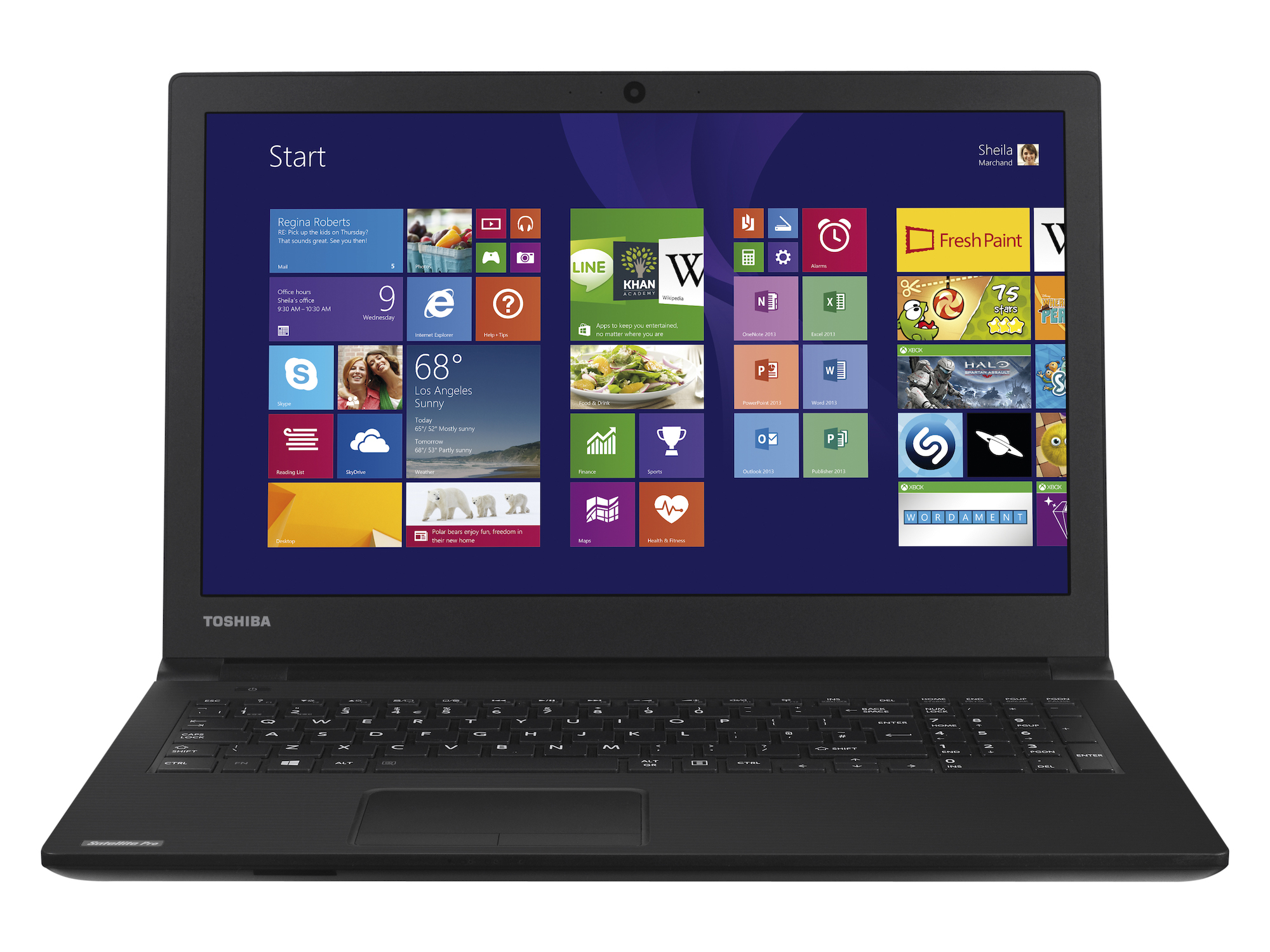
This jack-of-all-trades system is let down by an awful panel.
-
+
Solid build quality; Snappy, responsive keyboard; Core i5 processor
-
-
Dull design; Poor screen quality; Mediocre battery life

Toshiba's no-nonsense business notebook is aimed for use within SMBs, educational and governmental institutions.
With a Core i5 processor, slimline exterior and reasonable price, the device is a direct competitor to the Dell Latitude 13 series.
The 500 price point guarantees the use of modest components. The Core i5-4210U processor is a popular low-power part clocked to 1.7GHz, and is paired with 4GB of RAM. Toshiba offers a 5,400rpm, 500GB hard disk as standard, which can be upped to 1TB.
The resulting performance is mediocre. The R50 scored 59/100 in our benchmarks placing it near the bottom of our table - but above the Yoga 3 Pro, which is over double the price and has the most recent Intel Core M processor.

As a bonus, the performance of the R50 jumped up to 67/100 - matching the Dell Latitude 13 after we removed bloatware from the machine.
The hard disk acted as a bottleneck with sequential read and write speeds of 95MB/s and 82MB/s. This also impacted on boot times with the R50 taking 47 seconds to start up.
At least the R50's middling components meant there were no thermal issues. The system stayed cool and quiet throughout our tests.
Sign up today and you will receive a free copy of our Future Focus 2025 report - the leading guidance on AI, cybersecurity and other IT challenges as per 700+ senior executives
The slim four-cell battery pack as the rest of this machine. In our standard battery test video playback with Wi-Fi turned off and the screen at 75 per cent brightness the R50 lasted for 6 hours and 49 minutes.
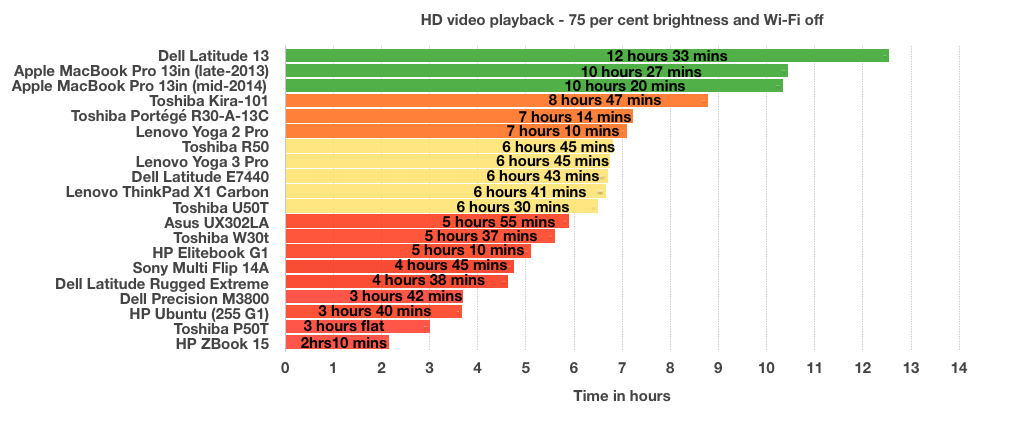
It should extend to eight hours with the screen dimmed and Power Saver mode chosen but it's unable to match its rivals like the Latitude 13, which currently leads our benchmarking with 12 hours and 33 minutes.
Disappointing display
The 15.6in display features a dated 1,366 x 768 resolution. It's not ideal for multi-window working, lacks touch screen functionality and isn't suited for high-definition work. However, it does have a matte finish to take the edge of brightly lit office environments.
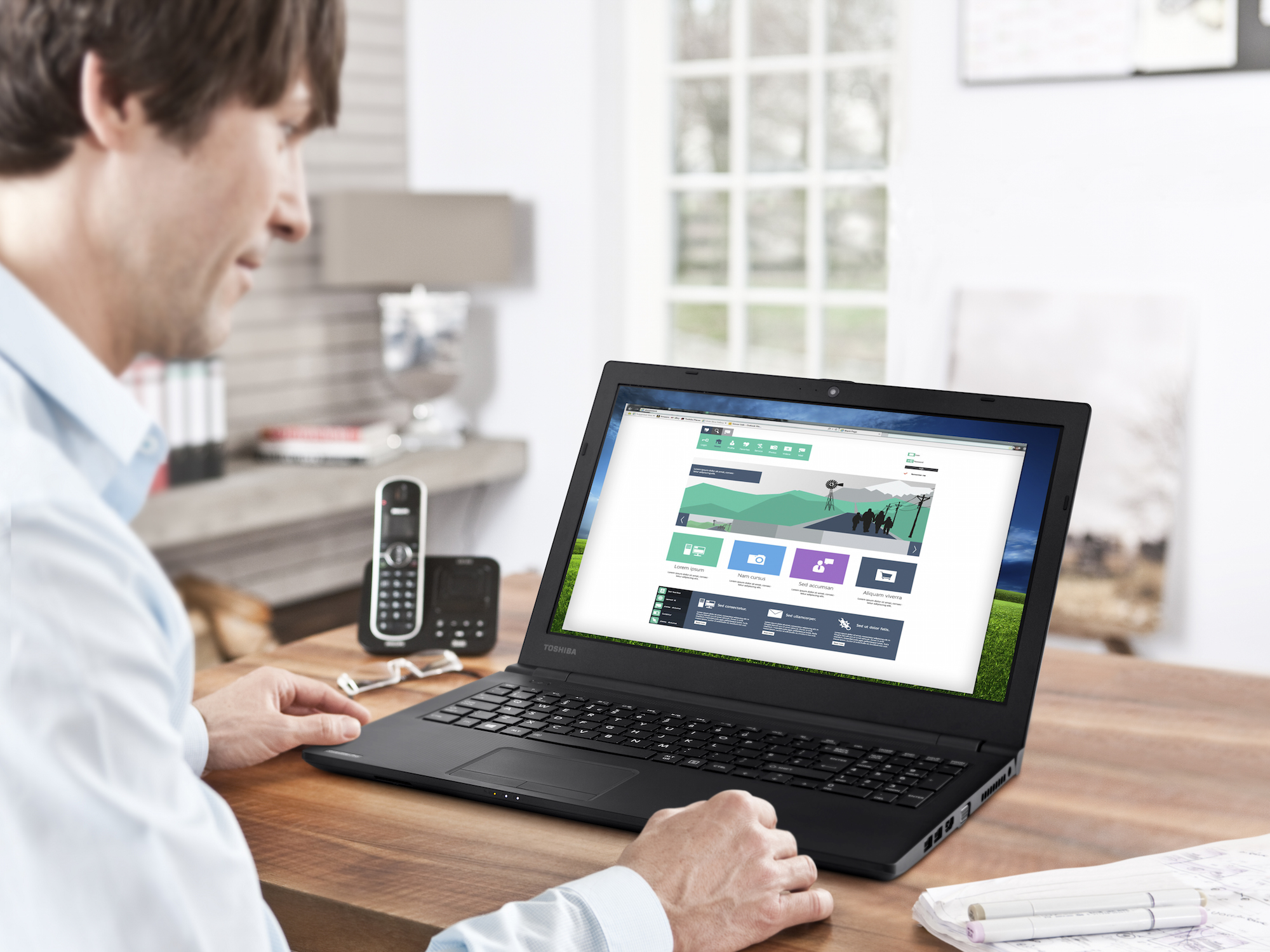
The 233cd/m2 brightness level was decent, but every other aspect of this panel disappointed. The wayward Delta E (8.18) and cold colour temperature (6,931K) meant colours were pale.
Black levels were so high, they appeared a deep shade of grey. And a low contrast (231:1) meant colours had no depth.
At the 500 mark, this is typical of the quality and whilst it's ok for browsing and word processing, it's not cut out for any multimedia work.
Build quality
At 2.3kg, the R50 isn't the lightest laptop around but it's portable.
Build quality is solid with the little flex in the underside or wrist-rests. Toshiba has included an optical drive, an endangered species in 2014, and also a numberpad. The edges house 2 x USB 3 ports, a USB 2 connector, and HDMI and D-SUB outputs. There's a card reader and a Kensington lock slot, but no fingerprint reader.
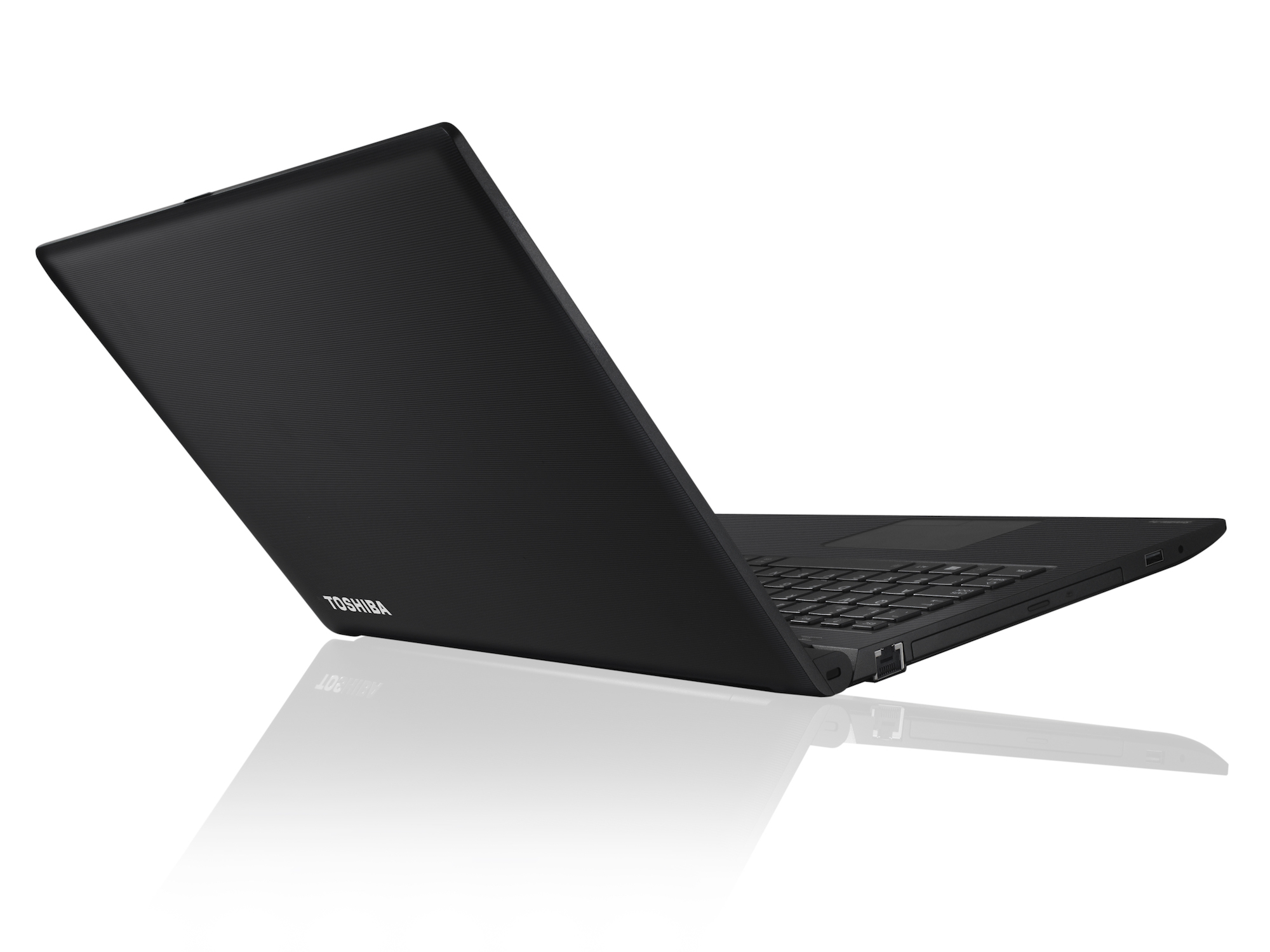
It looks like the budget ran out before the R50 got to Toshiba's design department because it's one of the plainest portables we've seen. The black plastic is barely decorated with subtle straight lines, the keyboard and trackpad are both black, and only the lid's Toshiba logo is decorated in metallic, shining plastic.
Keyboard/Trackpad
The R50's keyboard has a sensible layout, with large keys and a numberpad, and the Scrabble-tile typing surface proved pleasing to use. The keys were consistent, with a light, rapid action aided by the solid base.
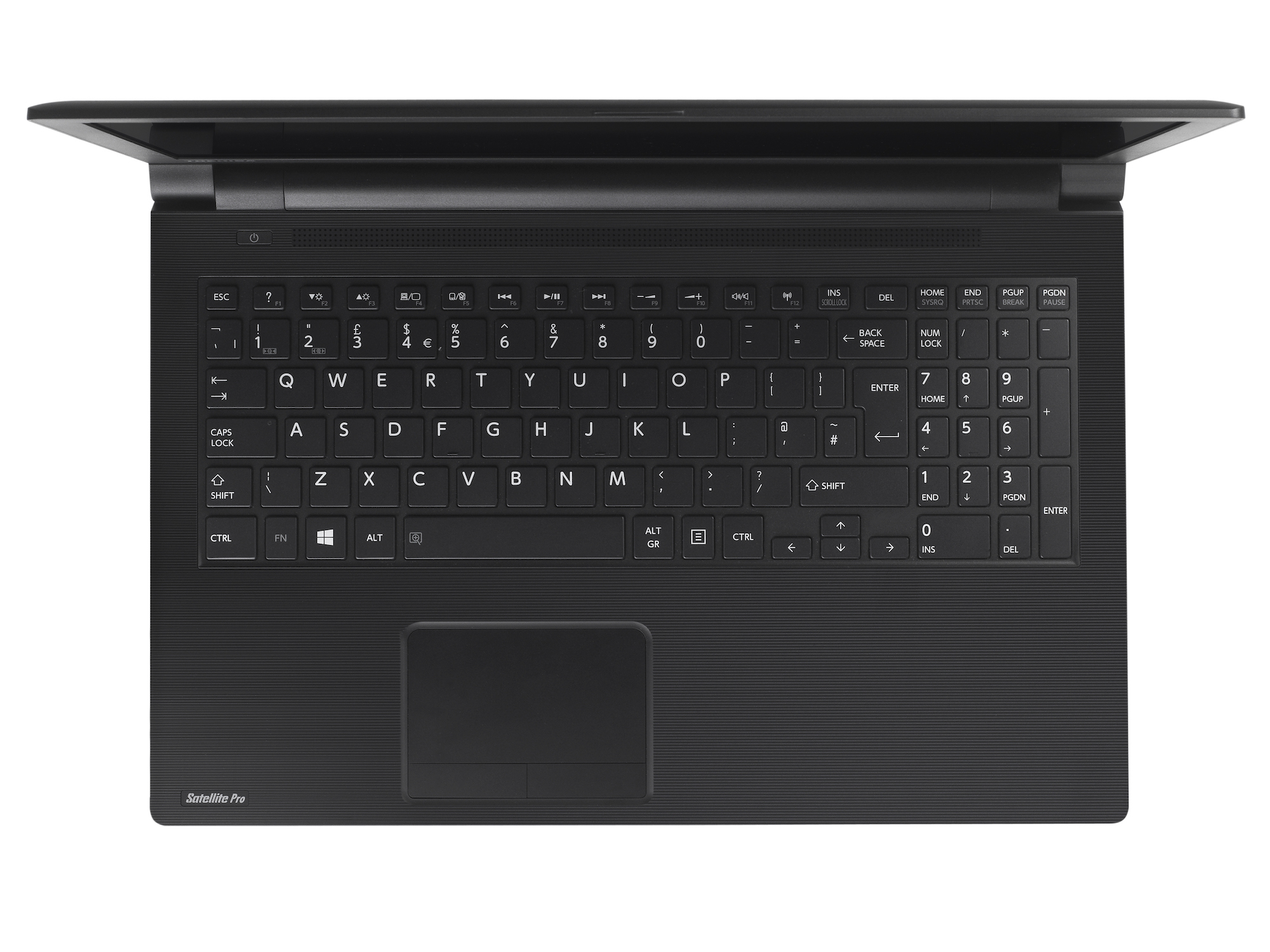
The trackpad was fine with Toshiba steering clear of any gimmicks. We found the smooth surface to be accurate.
Better ergonomic designs are available but you'll have to spend considerably more.
Choice between Windows
Unusually, the R50 ships with two operating systems. Windows 7 Professional 64-bit is preloaded and a copy of Windows 8.1 Pro 64-bit is included on a DVD.
As with most PCs, bloatware makes an unwelcome appearance. McAfee's security software threw up numerous irritating pop-ups, and Internet Explorer was saddled with an extra tab from bookmarking tool Symbaloo.
The inclusion of Evernote, Spotify and Winzip was welcome, but over a dozen Toshiba tools were included, too.
It's up to users to decide how much of this software they'll keep, but we've already seen how this can reduce performance.
Removing all of those applications helped boot times, too the sluggish 47s boot sped up to 27s once we'd axed the bloatware.
Overall
This no-nonsense business system doesn't excel in any one area. The keyboard and trackpad are good, build quality is reasonable and its performance is average.
This machine is capable of handling basic work tasks, and its sturdy design means it'll be at home in the office or on the road. Dell's system is lighter, with better ergonomics and battery life, and isn't much more expensive so we'd opt for the Latitude rather than the latest Satellite Pro.
Verdict
This jack-of-all-trades system is let down by an awful panel.
Processor: 1.7GHz Intel Core i5-4210U (2.7GHz Turbo Boost)
GPU: Intel HD Graphics 4400 |
Memory: 4GB DDR3
Storage: 500GB hard disk
Connectivity: Dual-band 802.11ac, Bluetooth 4.0, Gigabit Ethernet
Ports: 2 x USB 3, 1 x USB 2, HDMI, D-SUB, SD card reader, Kensington lock slot Dimensions: (WxDxH): 379 x 258 x 24mm Weight: 2.4k
Mike Jennings has worked as a technology journalist for more than a decade and has been fascinated by computers since childhood, when he spent far too long building terrible websites. He loves desktop PCs, components, laptops and anything to do with the latest hardware.
Mike worked as a staff writer at PC Pro magazine in London for seven years, and during that time wrote for a variety of other tech titles, including Custom PC, Micro Mart and Computer Shopper. Since 2013, he’s been a freelance tech writer, and writes regularly for titles like Wired, TechRadar, Stuff, TechSpot, IT Pro, TrustedReviews and TechAdvisor. He still loves tech and covers everything from the latest business hardware and software to high-end gaming gear, and you’ll find him on plenty of sites writing reviews, features and guides on a vast range of topics.
You can email Mike at mike@mike-jennings.net, or find him on Twitter at @mikejjennings
-
 Qualcomm the data center with $2.4 billion Alphawave Semi acquisition
Qualcomm the data center with $2.4 billion Alphawave Semi acquisitionNews The move sees Qualcomm absorb Alphawave Semi’s portfolio of custom silicon, high-speed connectivity solutions, and chiplets
By Daniel Todd Published
-
 ‘If software development were an F1 race, these inefficiencies are the pit stops that eat into lap time’: Why developers need to sharpen their focus on documentation
‘If software development were an F1 race, these inefficiencies are the pit stops that eat into lap time’: Why developers need to sharpen their focus on documentationNews Poor documentation is a leading frustration for developers, research shows, but many are shirking responsibilities – and it's having a huge impact on efficiency.
By Ross Kelly Published
-
 OpenAI says GPT-5.2-Codex is its ‘most advanced agentic coding model yet’ – here’s what developers and cyber teams can expect
OpenAI says GPT-5.2-Codex is its ‘most advanced agentic coding model yet’ – here’s what developers and cyber teams can expectNews GPT-5.2 Codex is available immediately for paid ChatGPT users and API access will be rolled out in “coming weeks”
By Ross Kelly Published
